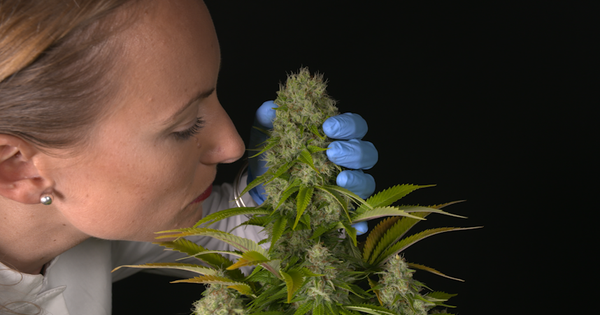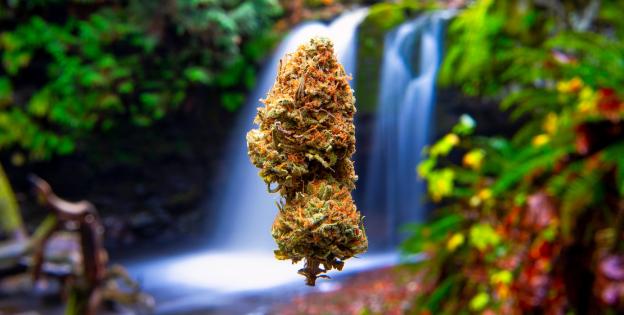- Found in cannabis resin, terpenes are the compounds that give cannabis plants their distinct aroma.
- As explained in previous posts, some terpenes are found in higher amounts than others – these are known as "cannabis main terpenes", and include humulene among many others.
- Read on to find out all there is to know about this fragrant terpene.

What is humulene?
Humulene is one of more than 200 terpenes found in cannabis. Produced in lower amounts than other terpenes including limonene and myrcene, it is still abundant enough to be considered one of the plant's main terpenes.
Technically speaking, humulene is classified as α-caryophyllene, a sesquiterpene that was first found in hop essential oil – the hop plant is known scientifically as Humulus lupulus, hence the terpene's name.
Humulene is an isomer of β-caryophyllene, which means both sesquiterpenes are composed of the same elements in the same proportions – they share the same chemical formula – but differ in their molecular structure. Many of the plants containing β-caryophyllene produce also humulene, and the two sesquiterpenes have very similar aromas. Some examples of plants containing both β-caryophyllene and humulene include basil, sage and clove, the combination of the two terpenes being commonly found also in a variety of cannabis strains.
Found in abundance in nature, humulene is partly responsible for the aroma of beer, which, as already mentioned, occurs in high levels in the hop plant. Cannabis produces humulene in the buds' resin glands, and uses it for protection – the aroma of terpenes repels insects and prevents fungal and bacterial infections.
What does humulene smell like?
Humulene is what gives beer its earthy and woody yet spicy notes, and together with other terpenes, it is responsible for creating the signature aromas of a good number of cannabis strains. You can get a clearer idea of what humulene exactly smells like if you think of the spiciness of ginger and ginseng.
Similar to myrcene and pinene, humulene is a key constituent of cannabis' aromatic profile, but since it usually occurs in smaller quantities, rather than as the predominant aroma, it is perceived as an undertone that fills the palate with earthy nuances a few seconds after exhaling.

What are the therapeutic benefits of humulene?
Humulene has been used for centuries in traditional medicine due to the many health benefits it provides. As already mentioned, the terpene has antibacterial properties that protect not only plants but also humans, aiding in the treatment of a number of conditions.
A 2006 study found, for instance, that small amounts of humulene can help fight the bacterium Staphylococcus aureus, which has the potential to cause a variety of infections all over the body.
Humulene is also known for its anticancer properties. While further research is still needed, a study carried out in 2016 found that humulene can help destroy cancer cells when administered in combination with cannabinoids and other terpenes.
Also, according to this study, the humulene contained in basil essential oil can help activate the body mechanisms for fighting cancer. The terpene is also an effective anti-inflammatory and appetite suppressant, meaning it could be effective in treating obesity.





Comments from our readers
There are no comments yet. Would you like to be the first?
Leave a comment!Did you like this post?
Your opinion about our seeds is very important to us and can help other users a lot (your email address won't be made public).